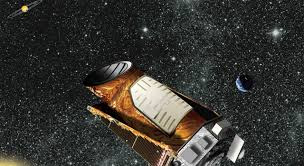This Gonna be a lengthy blog, But an informative one :)
What are Exoplanets?
How They are Discovered?
Generally, there are two ways in which These Exoplanets are discovered.
- Ground-Based Search Projects. These are carried out on earth in Observatories.
- Space Missions. These are carried out With the help of Space crafts.
Ground-based search projects:

So far, only around 500 Exo-Planets were reported to be Discovered by Gound based earth projects.
Space Missions:
- SWEEPS:
The Sagittarius Window Eclipsing Extrasolar Planet Search, or SWEEPS. This spacecraft was launched by European Space Agency(ESA) Along with NASA in 2006, This spacecraft Discovered 16 Exoplanets. However, this mission Ended in the same year, 2006. - COROT:
Convection, Rotation et Transits Planetaires. This mission was organized by The French space agency(CNES) and was launched in 2006 and served Till 2012. This spacecraft discovered 34 Exoplanets. - Kepler:
One can say this was the most successful space mission To find Exoplanets. This Mission was Organised by NASA. Kepler found 2,347 Exoplanets. This Mission was started in 2009 and served Till 2013. - K2:
Also called as Kepler 2, is a NASA organized mission as a successor of Kepler, It was launched in the same year when Kepler Retired due to Fuel depletion. It found almost 427 Exo-planets. K2 Retired in 2018. - TESS:
This is a NASA organized Mission in collaboration with MIT(Massachusetts Institute of Technology). This was launched in 2018 and has found 38 Exoplanets. This Spacecraft is still On-Duty and is Expected to Find 1250 Exoplanets. Let's Hope It will reach its Target.
Any use of finding exoplanets??
So the next question that arises is that, Is there any use of Discovering Exo-Planets?🤔 The Answer is Absolute Yes! We can find Habitable Planets, which means, We can find Planets other than Earth where there is Life or Existed Previously.
- Habitable zone:So, The next thing is How we are able to find on Which Planet Life can Exist? Before Answering This one let us know why Life is Able to Exist on our planet Earth? The Answer is Very simple, Its conditions That are Earth is Having a Planetary Surface, and Its position away from earth is in such a zone of Area that Heat Radiation from the sun is Not Too Hot and Not Too Cold. This zone is called as "Habitable zone". All these space missions Identify this Habitable zone of stars. Habitable Zone position distance is directly proportional to the size of the star. Means, Bigger the size of the star, that much far away from it is the Habitable Zone. Till now all Space missions Identified 18 Exoplanets, Which are Potentially Habitable. and 29 other planets which are Optimistically Habitable (not surely Habitable).
- How the calculations are made?
Kepler Telescope can easily identify Planets and can all required calculations that are Light years distance away from us. But How Kepler used to do that?? Kepler uses a Method called Transit Photometry. Let us understand this. When a Planet comes in between Kepler and the star around which The planet is Revolving. when Planet comes in between Star and Planet like this, there will be a reduced in brightness level. Kepler observes this and calculates the reduced in brightness level, time for which this Phenomenon happens, and sends the necessary data to the earth, in this way we can predict with accuracy about The size of the planet, Habitable zone, and whether the planet is Habitable or not. Somewhat this procedure is similar to The Eclipses.
So, After discussing all the This, One can Try to question that. Everything is Ok, But How the names are Given to a Particular ExoPlanet. The country which Identifies a Particular Asteroid can Name That on its wish but it has to be accepted by International Astronomical Union(IAU). But, Kepler Used to Identify Planets in a Ratio of 1 per Day. So, Since it is very difficult to conduct such a Large IAU meeting Every day just to name planets. So, Those Planets were Hence named With Kepler as Prefix and suffix with Alphabet and Digits.
Thanks for Scrolling down :)
I hope you have learnt something today and I also hope that you have enjoyed the blog.
Please Comment and Let me know How you Have felt about the Blog and The Topic.
Please share with your Family Members and Friends If you have Liked the blog.
Please subscribe to Get the Regular updates from this Blogspot.
Thanks for Reading
See you in the next Blog......
TAKE CARE....



















6 Comments
It is really great- Shourya
ReplyDeleteThank you shourya :)
DeleteOoh nice
ReplyDeleteThanks :)
DeleteNice information.. 👍
ReplyDeleteThank you sir
DeletePlease don't make Irrelevant comments and Please don't spam the comments section.